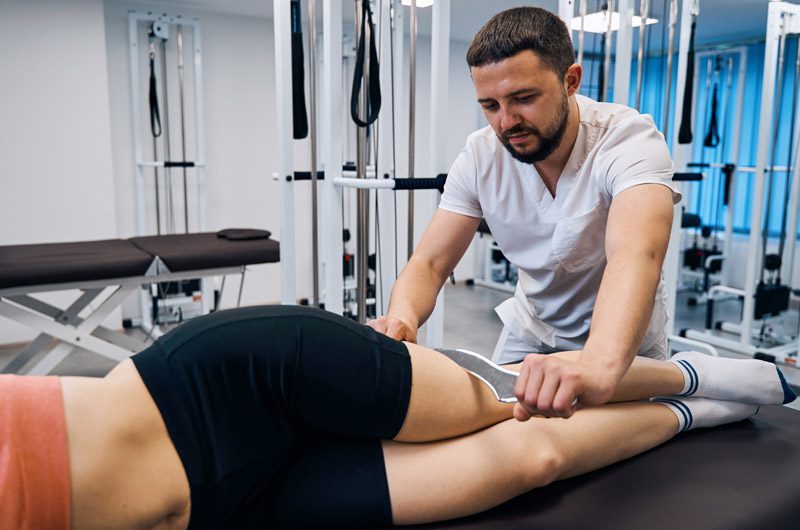section-1414e32

section-018cc4c
The Graston Technique is a form of instrument-assisted soft tissue mobilization (IASTM) used to support injury recovery. Therapists licensed to treat patients with the technique use six Graston instruments made from stainless steel and designed with beveled edges and angles to detect and ease myofascial restrictions.
How Does Graston Therapy Work?
The Graston Technique interrupts the pain cycle and the growth of scar tissue, leading to improvements in soft tissue flexibility and range of motion.
During Graston Therapy, the clinician twists, turns, and chisels away at the scar tissue to induce controlled trauma in the treatment area. This triggers an inflammatory response that promotes healing and recovery. Graston Therapy also stimulates collagen production and redistribution in the proper pattern.
Treatment is provided along the kinetic chain, which means that a patient with back pain may also receive therapy to their hip flexors, abdomen, hamstrings, shoulders, and other body parts connected through the fascial network.
Who is a Candidate for the Graston Technique?
This form of therapy may be an option for patients with:
- Ankle, hip, or neck pain
- Tingling fingers and arm
- Carpal tunnel syndrome
- Fibromyalgia
- Tennis or golfer’s elbow
- Lingering scar tissue
- Strained muscle
- Pulled ligament, tendon, or fascia
section-24f3387


section-c8617d2
Benefits of Graston Therapy
The goals of Graston therapy include:
- Decrease pain
- Decrease swelling
- Reduce or eliminate the need for medication
- Break down scar tissue to increase range of motion
- Stretch connective tissues
- Reposition soft tissue structure to restore healthy function
- Support the body’s natural healing process
The Graston Technique also offers a neurologic benefit. Treatment activates certain nerve fibers, in addition to the body’s position sense organs, such as mechanoreceptors and proprioceptors.
What Happens During Graston Therapy?
Graston therapy begins with a cardiovascular warm-up to increase blood flow to the treatment area and create optimal conditions for healing. Cardiovascular activity may include riding a stationary bicycle or walking on a treadmill.
The clinician may then apply ultrasound or heat treatment to the injured area to warm up the soft tissue. Using Graston Technique instruments, the practitioner will scan and treat the affected area using specific strokes and pressure. Each tool will be used for a limited amount of time in each treatment area.
Next, the patient will do light stretches that complement the movement impairment and strengthening exercises with light resistance and high repetition.
The final step in treatment is to apply a cold pack to decrease swelling and pain in “flat” surfaces, such as the hands, knees, back, and neck.
Potential Side Effects of Treatment
After treatment, patients may experience:
- Discomfort or pain
- Bruising around the treatment area
- Spontaneous connective tissue release which occurs when scar tissue separates from healthy tissue
How Soon Will Patients See Results?
When offered in conjunction with rehabilitative exercises, the Graston Technique can effectively restore movement impaired by soft tissue dysfunction.
Most patients will see positive results within three to four sessions, with noticeable improvements in pain and/or range of motion by the end of the first or second week of treatment.
